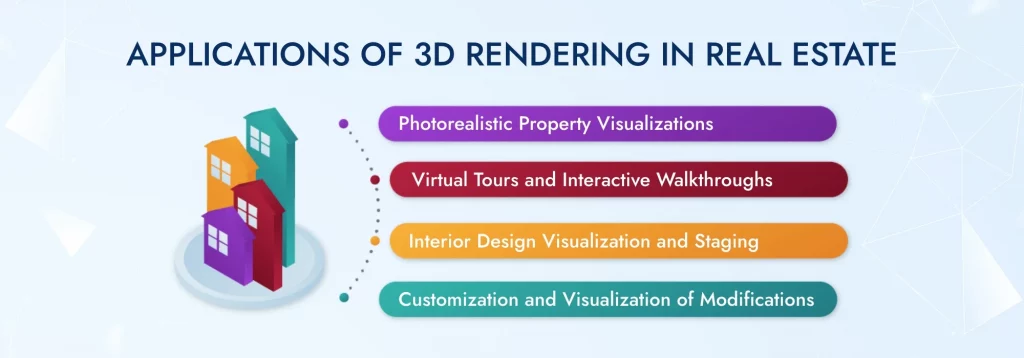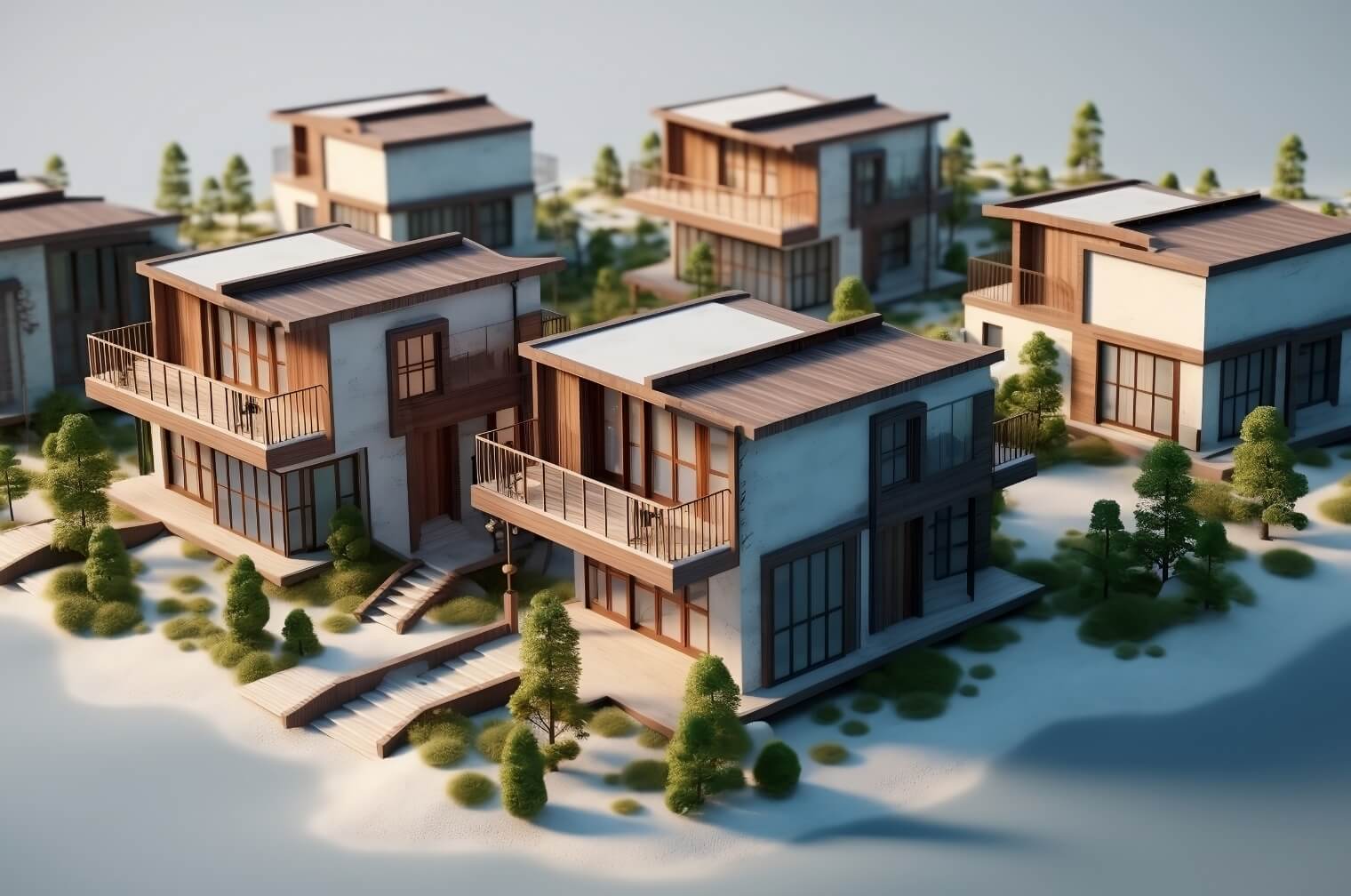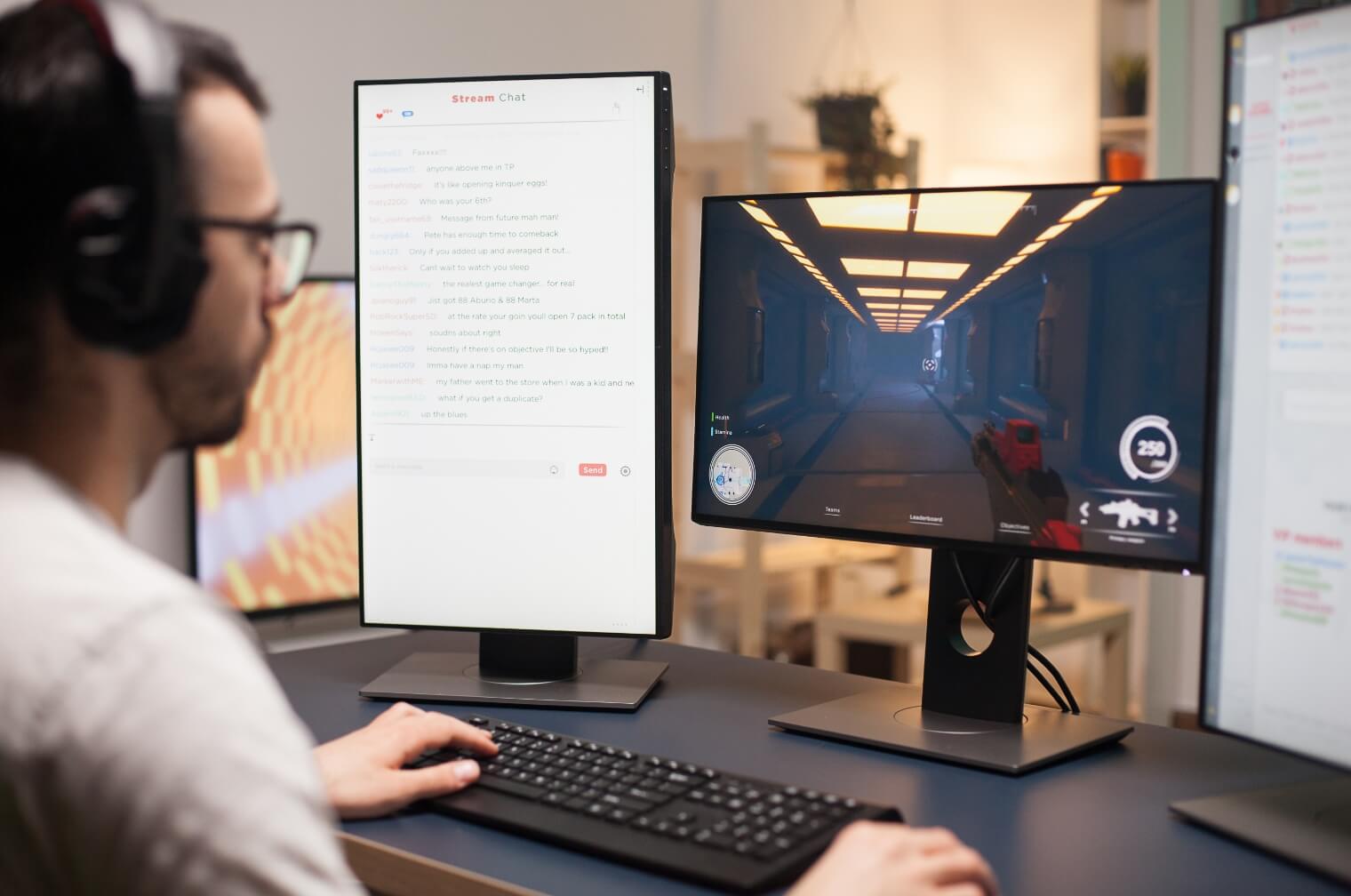Machine Learning and AI for revolution of Tech Companies are changing and streamlining businesses.
The real estate industry is one of the industries which is constantly updating and upgrading. With the use of the latest technologies, this industry is undergoing an intense transformation in its marketing and sales strategies.
Real Estate 3D Rendering development has emerged as a game-changing innovation in the industry.
Let’s further explore everything about Real Estate 3D Rendering development, including its definition, applications, challenges, and area of app development with 3D rendering real estate solutions.
Real estate marketing and sales landscape
More than any other industry, Real Estate relies more on effective marketing and sales techniques.
The success of real estate transactions depends on the ability to capture the imagination of potential buyers and investors.
Traditional methods of showcasing properties, such as photographs and blueprints, often fall short in conveying the full appeal of a space.
Role of technology in transformation:
The real estate industry has embraced technological innovations over the years to improve the marketing and sales processes.
From online listings to virtual tours, technology has played a pivotal role in redefining how properties are presented to clients. 3D rendering for is the next logical step in this evolution.
What is 3d rendering?
3D rendering is a technology that allows for the creation of highly realistic visualizations and representations of physical spaces.
3D rendering for real estate can bring properties to life, providing potential buyers and investors with immersive experiences.
The future of real estate rendering is taking shape, and it promises to revolutionize the industry.
3D solutions for real estate refer to the process of generating three-dimensional visualizations of properties, both interior and exterior.
These visualizations are highly detailed and photorealistic, offering a comprehensive view of what a property looks like.
How does 3d rendering work?
The process involves creating a digital model of the property and applying textures, lighting, and other elements to make it look as realistic as possible.
The result is a virtual representation that can be explored from different angles, much like a real property.
A comparison with traditional methods
When compared to traditional real estate marketing methods, 3D rendering real estate solution stands out.
While photographs and 2D-floor plans offer limited perspectives, 3D rendering allows potential buyers to virtually walk through a property and visualize it as their own.
By creating engaging and informative digital experiences, businesses can significantly enhance decision-making and shorten the sales cycle.
Applications of 3d rendering in real estate
Real estate 3D rendering development offers a wide range of applications that enhance design, marketing, decision-making, and customer engagement. Some of these applications are:

Photorealistic property visualizations
Real estate 3D rendering development is instrumental in creating visually striking marketing materials. From brochures to online listings, photorealistic renderings make properties appear as captivating as they are in reality.
Virtual tours and interactive walkthroughs
3D rendering real estate solution enables the creation of virtual tours, allowing clients to explore properties from the comfort of their homes. Interactive walkthroughs provide a sense of spatial awareness that traditional photographs cannot.
Interior design visualization and staging
For vacant or unfinished properties, 3D rendering real estate solutions can be used to stage and decorate spaces, helping buyers envision the potential of the property.
Customization and visualization of modifications
Prospective buyers can request specific modifications to a property and 3D rendering real estate app development can illustrate these changes before construction, allowing for customization and reducing misunderstandings.
Its ability to provide immersive and detailed visualizations has transformed the way real estate professionals operate, ultimately benefiting both property developers and prospective buyers or renters.
Challenges and limitations of real estate 3d rendering development
Challenges and Limitations in 3D Rendering for Real Estate Marketing and Sales.
While 3D rendering real estate app development is undoubtedly a game-changing tool for real estate marketing and sales, it comes with its fair share of challenges and limitations. Here’s a brief overview:
- Costs: Creating high-quality 3D renderings can be expensive. It requires skilled professionals, powerful hardware, and software licenses, which may not be feasible for all real estate businesses.
- Time-Consuming: Producing detailed 3D rendering real estate app development can be time-consuming. This can lead to delays in marketing campaigns and potentially longer listing times.
- Complexity: 3D rendering is a specialized skill. Finding or training professionals to create these renderings can be challenging, particularly for smaller real estate agencies.
- User Experience: While interactive 3D tours are captivating, not all potential buyers or investors may have the necessary devices or internet connections to experience them fully.
- Data Privacy and Security: Handling sensitive property data in the digital realm raise concerns about data security and privacy, necessitating robust measures to protect information.
Understanding and addressing these challenges is essential for real estate professionals looking to fully harness the potential of 3D rendering in their marketing and sales strategies.
Real estate 3d rendering development
As the demand for 3D rendering in real estate grows, so does the need for specialized apps. These apps can streamline the process of creating, sharing, and viewing 3D renderings.
The development process involves designing user-friendly interfaces, integrating rendering engines, and ensuring compatibility across various devices.
Enhanced visualization
3D rendering development allows potential buyers or investors to visualize the property’s layout, design, and features in detail before construction or renovation.
This can help them make informed decisions about the property and increase their confidence in the project.
Realistic lighting and textures
3D rendering development allows for realistic lighting and textures to be applied to the property.
This provides a more realistic representation of the property’s appearance and helps clients visualize the space better.
The cost of development
The cost of developing a real estate 3D rendering development can vary significantly based on the features, complexity, and platform chosen.
It’s important to consider these factors when budgeting for app development.
Conclusion
Real estate 3D rendering is a transformative tool that has the potential to redefine how properties are marketed and sold.
ViitorCloud Technologies has been delivering cutting-edge solutions across various industries for years and it extends to the Real Estate industry as well.
We have expertise in creating immersive and visually stunning applications and websites for Real Estate 3D Rendering Development that provide the specific requirements with the most seamless and engaging experience.
Don’t miss the opportunity to leverage the power of 3D rendering in your real estate business and stay ahead of the game.
Frequently asked questions
3D rendering is the process of creating two-dimensional images or animations from 3D models. It works by simulating the interaction of light with objects, textures, and camera angles to produce realistic visual representations.
The cost of 3D rendering for real estate can vary widely depending on factors like complexity, quality, and the service provider. Basic renders may start at a few hundred dollars, while high-end, photorealistic renders can cost several thousand.









